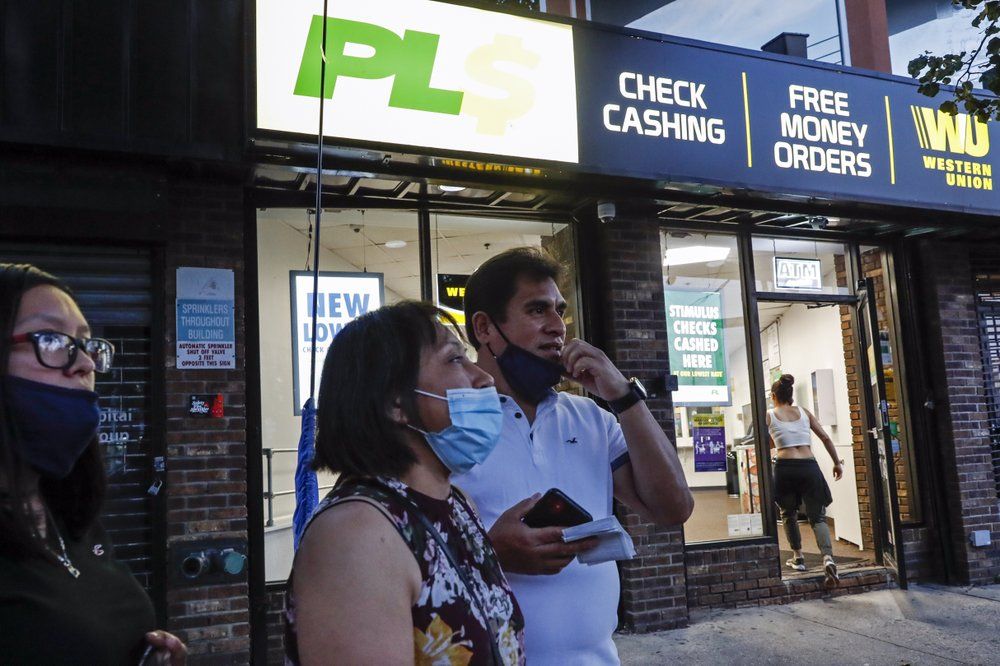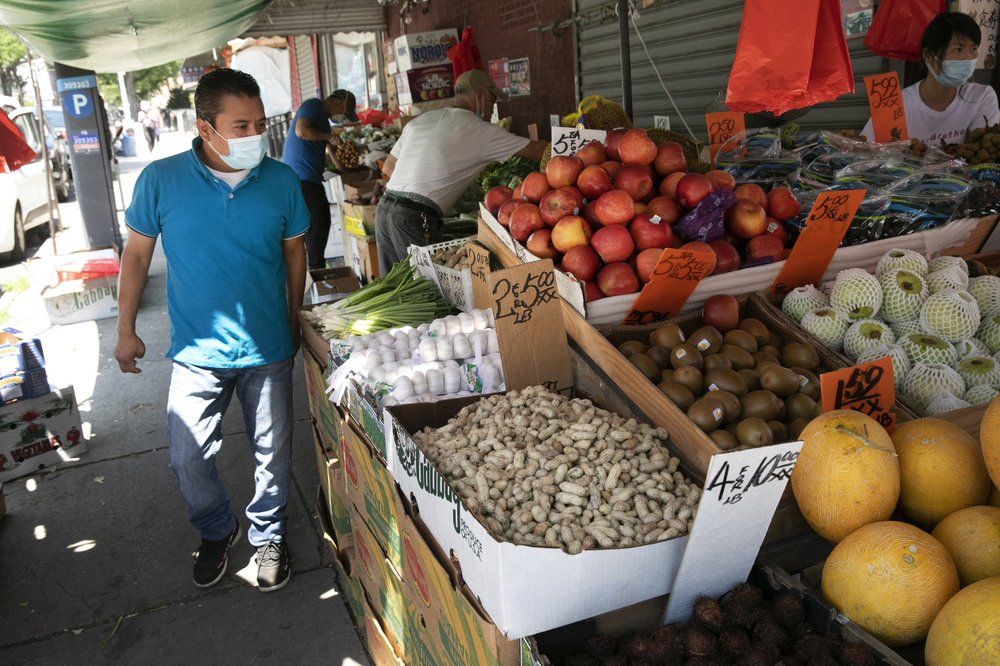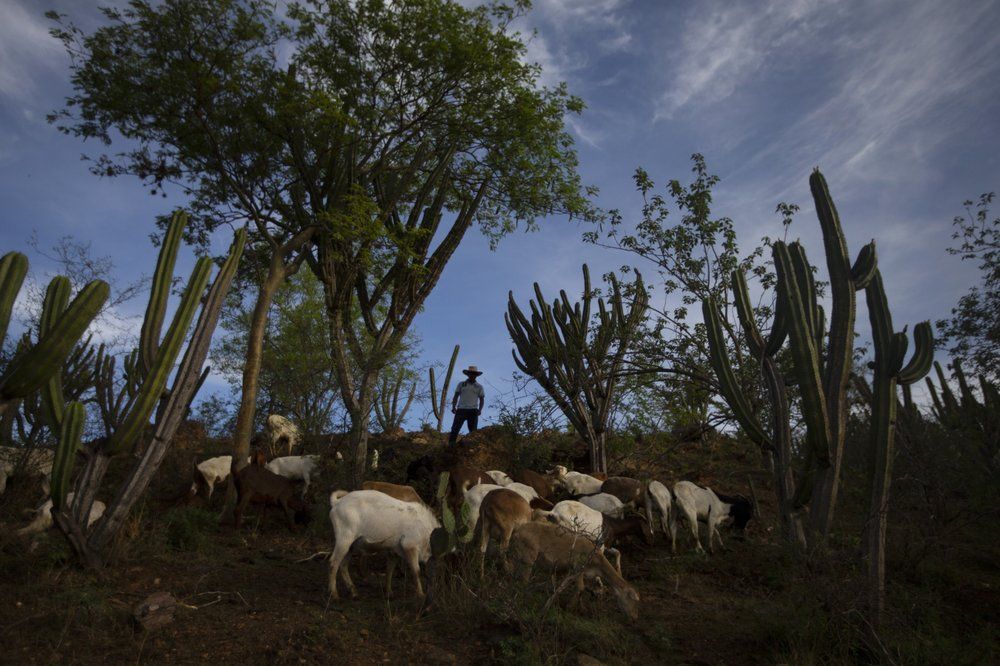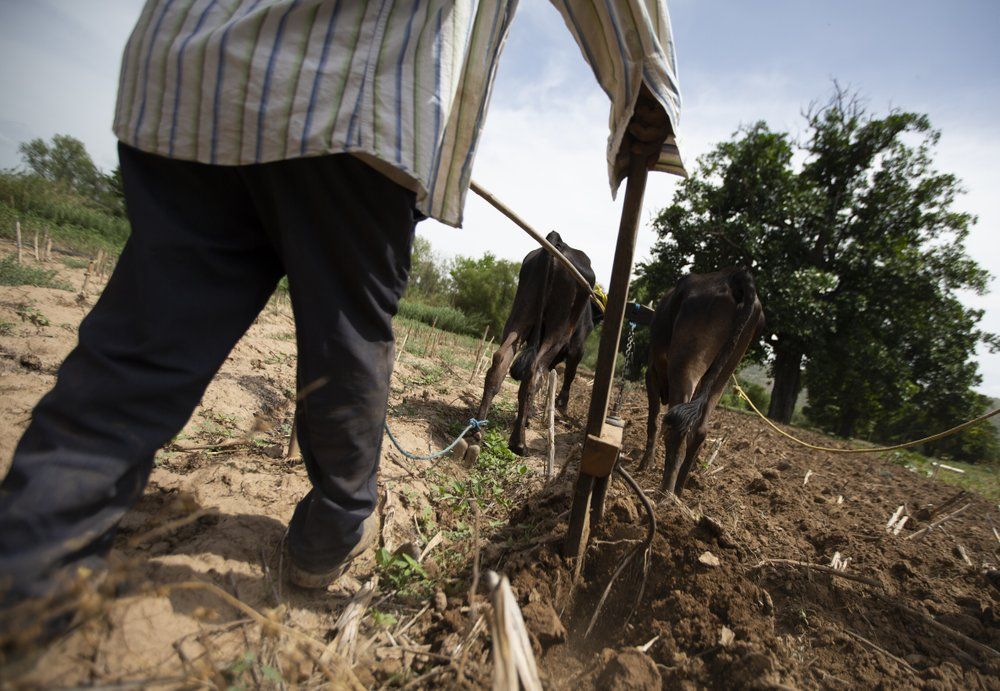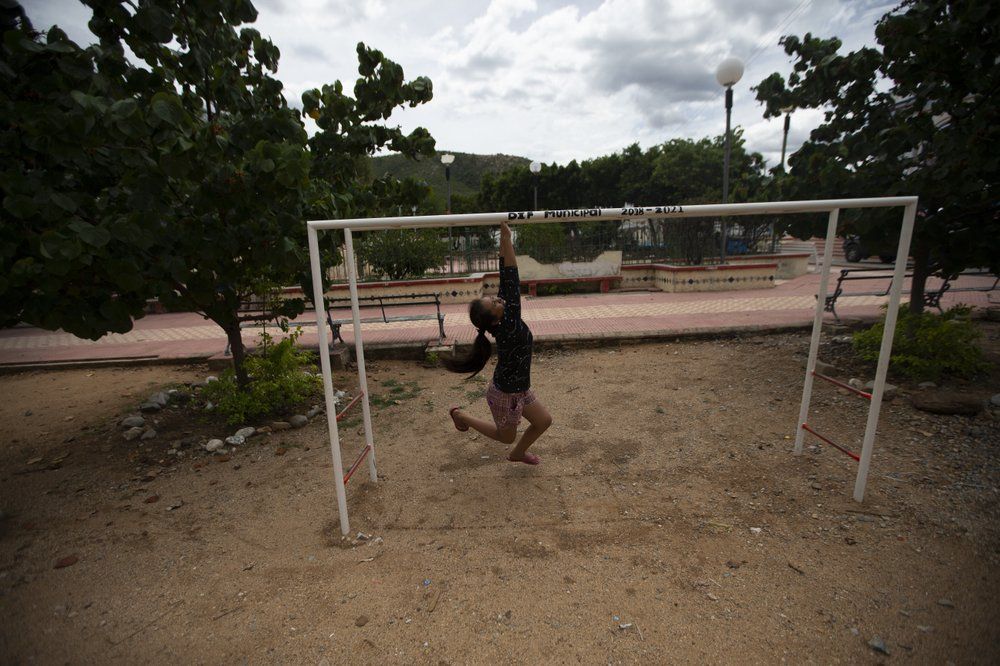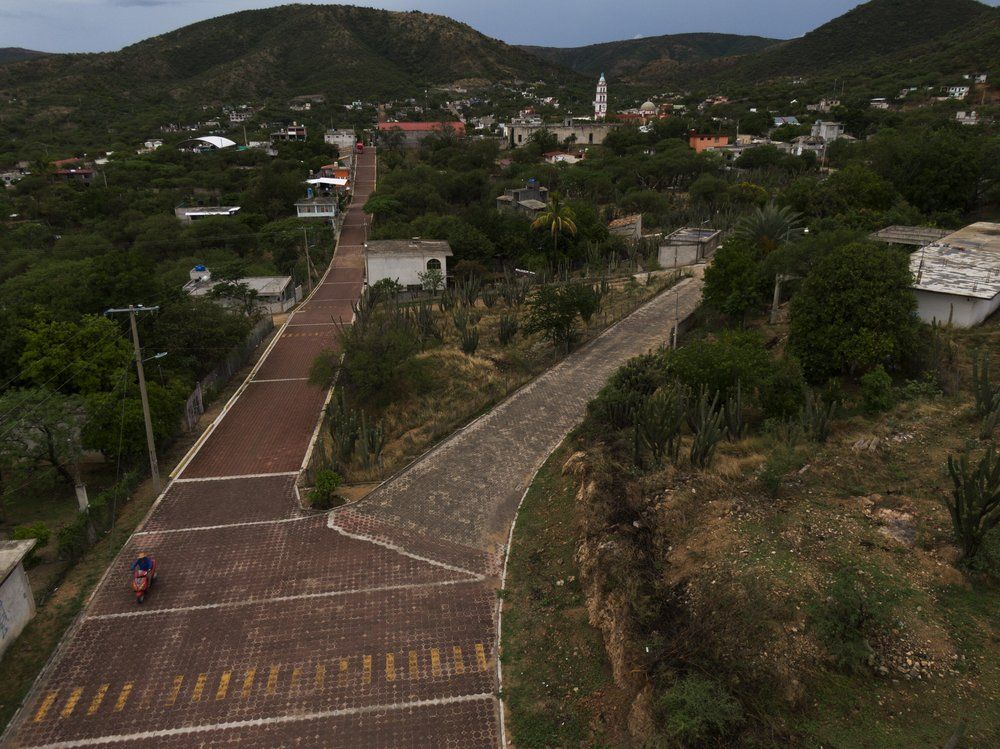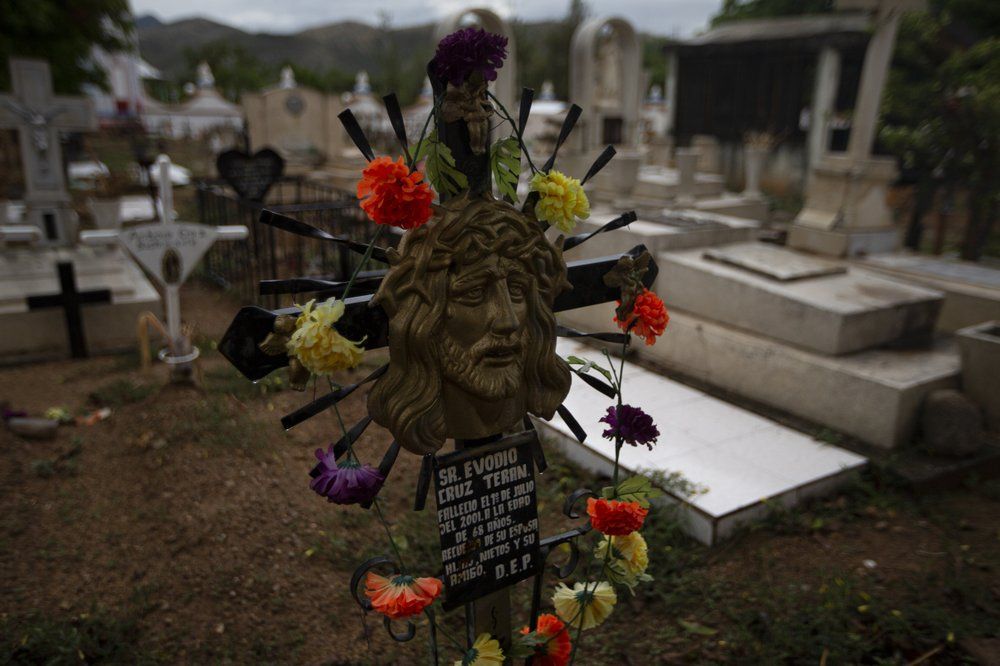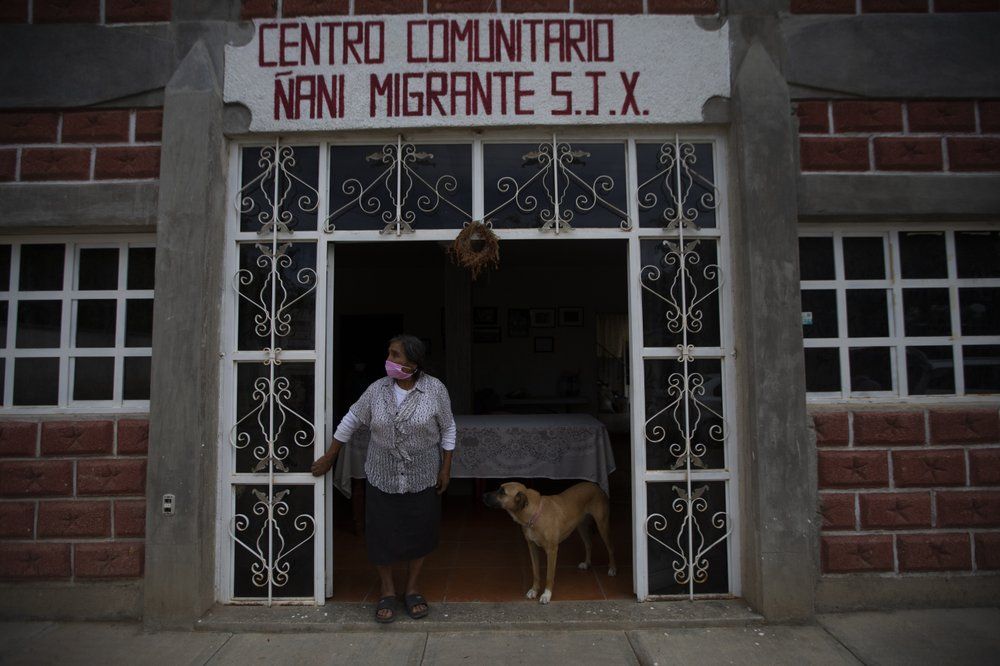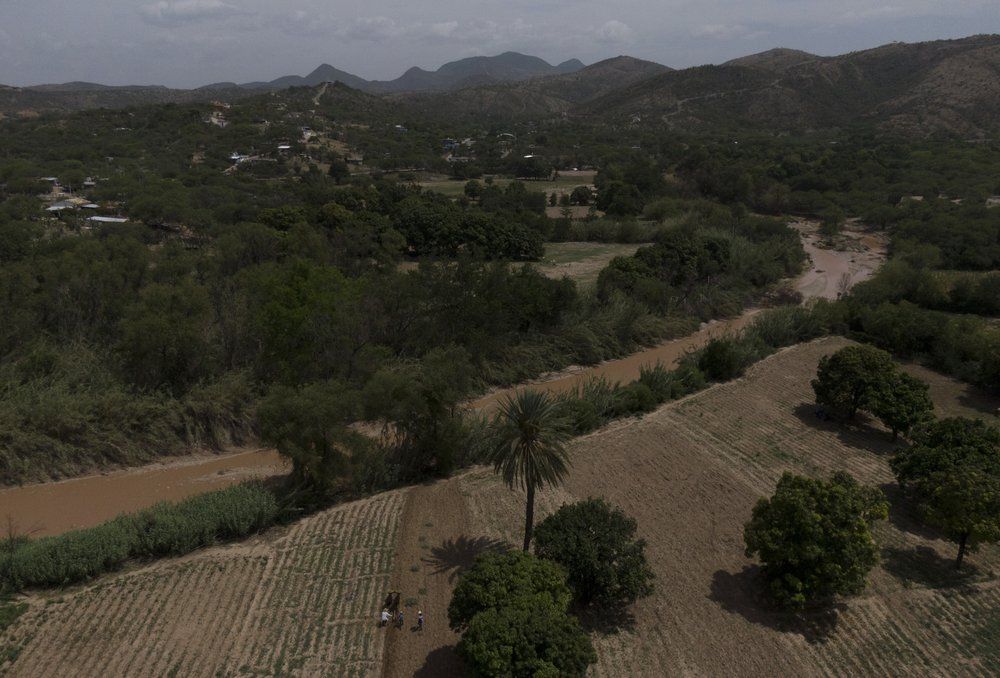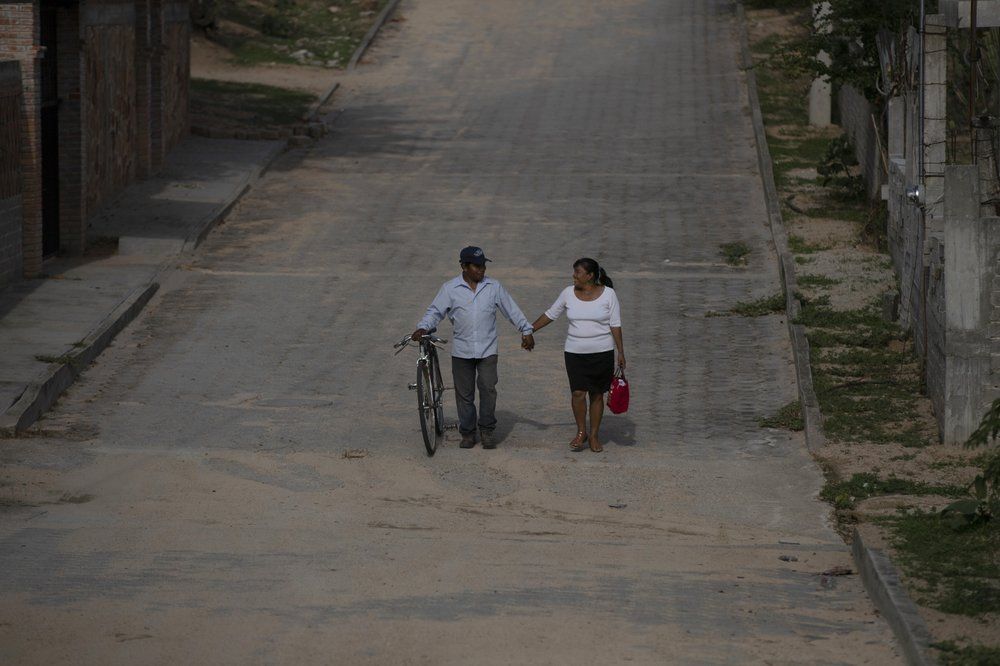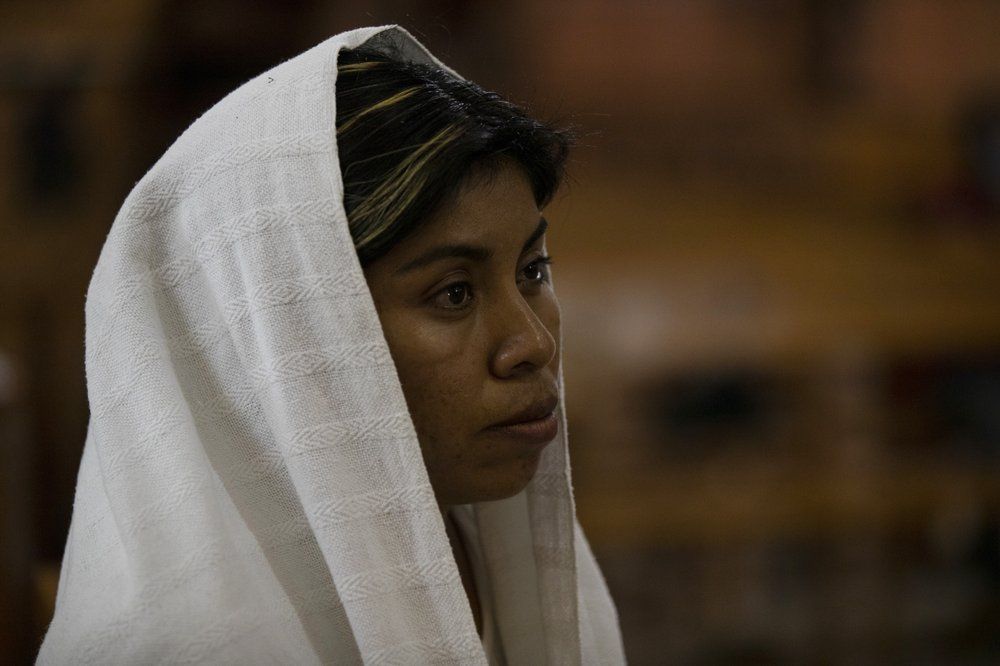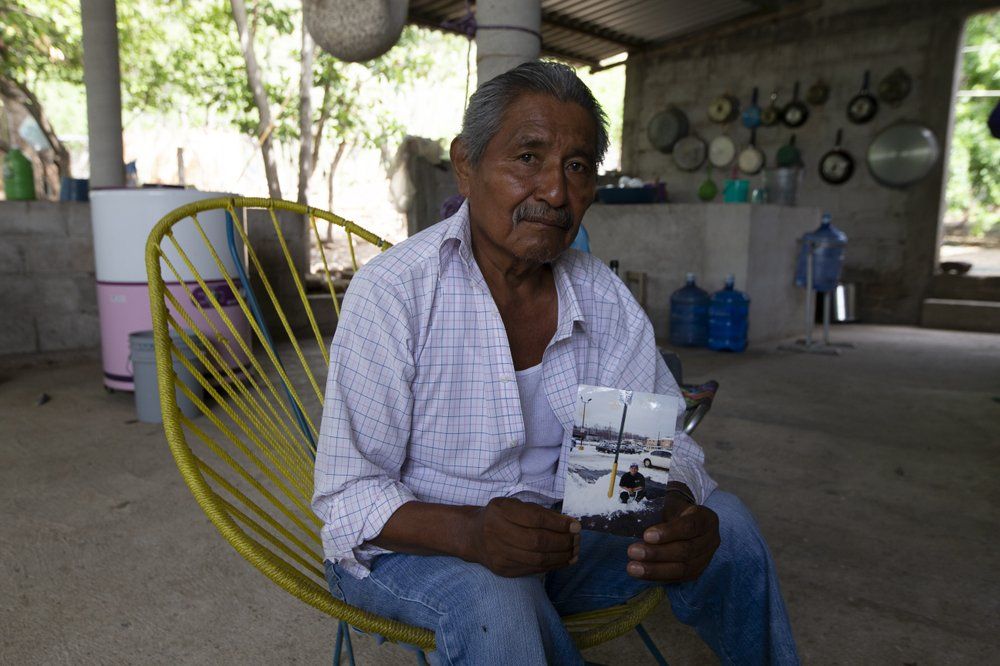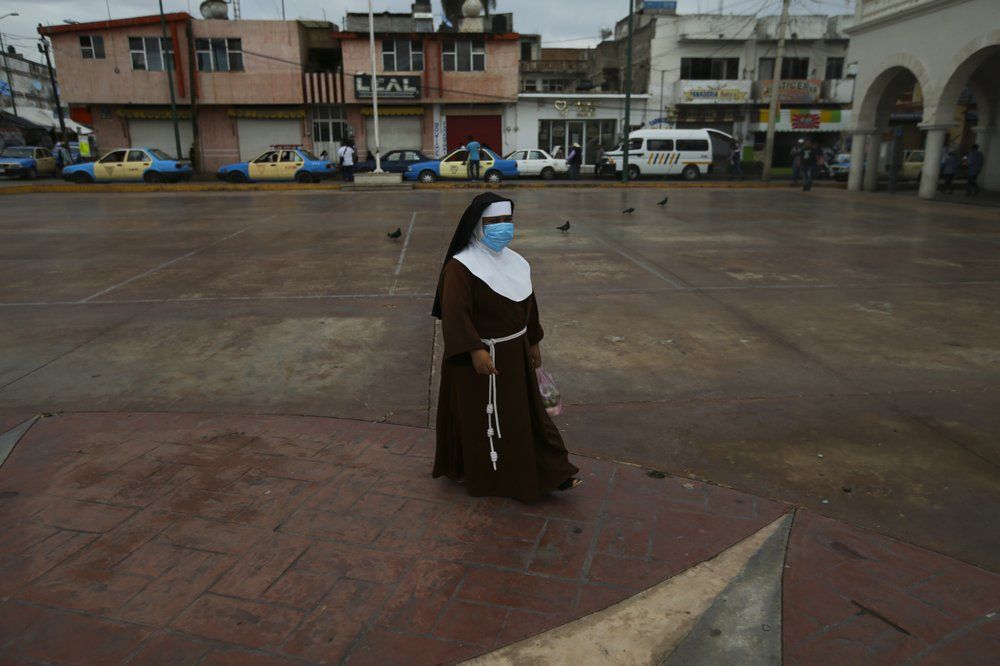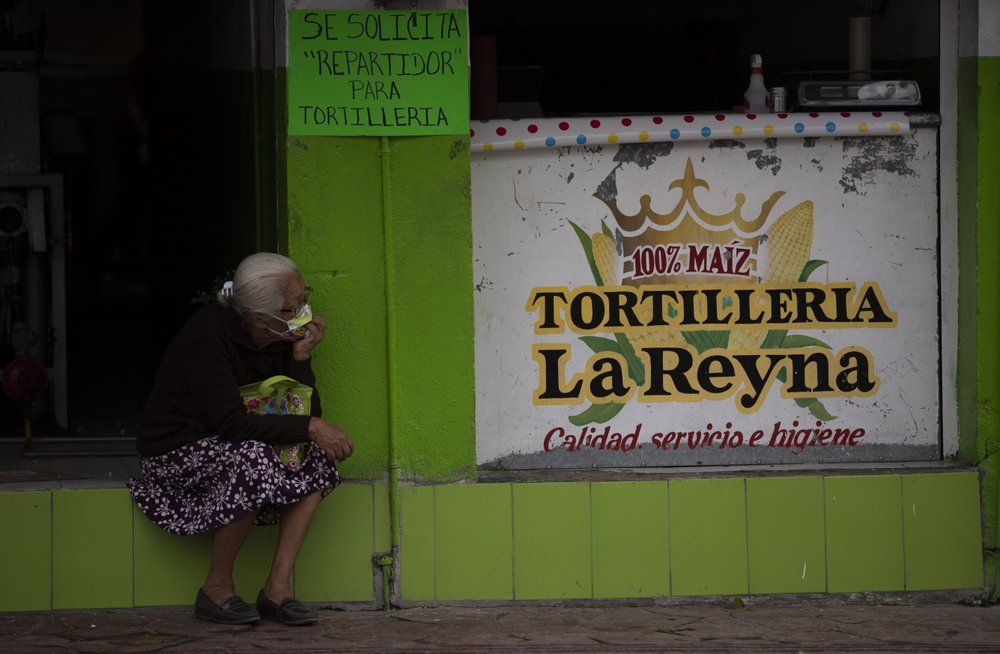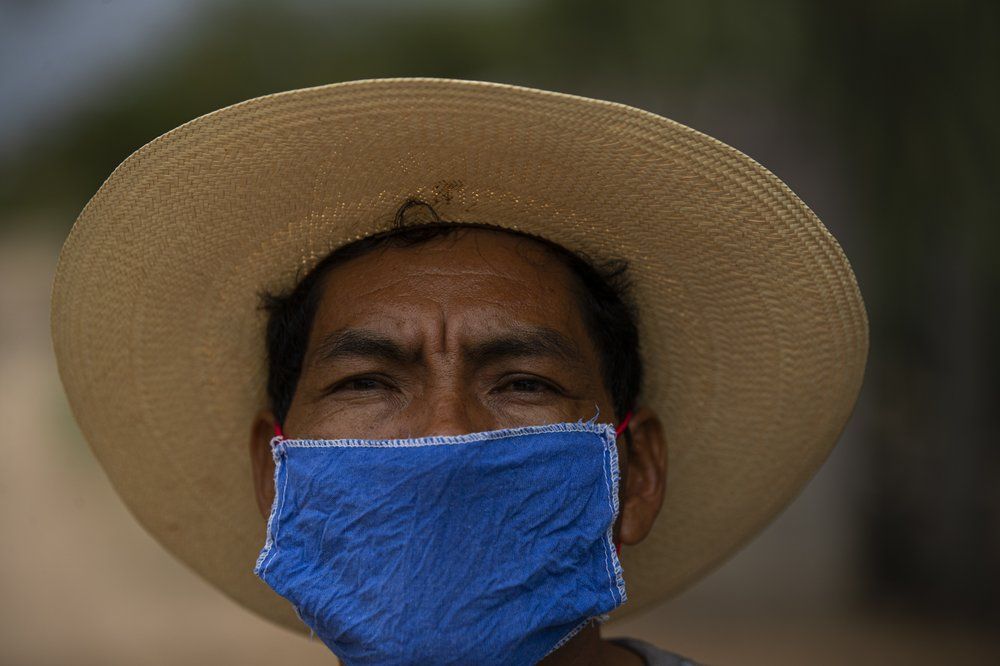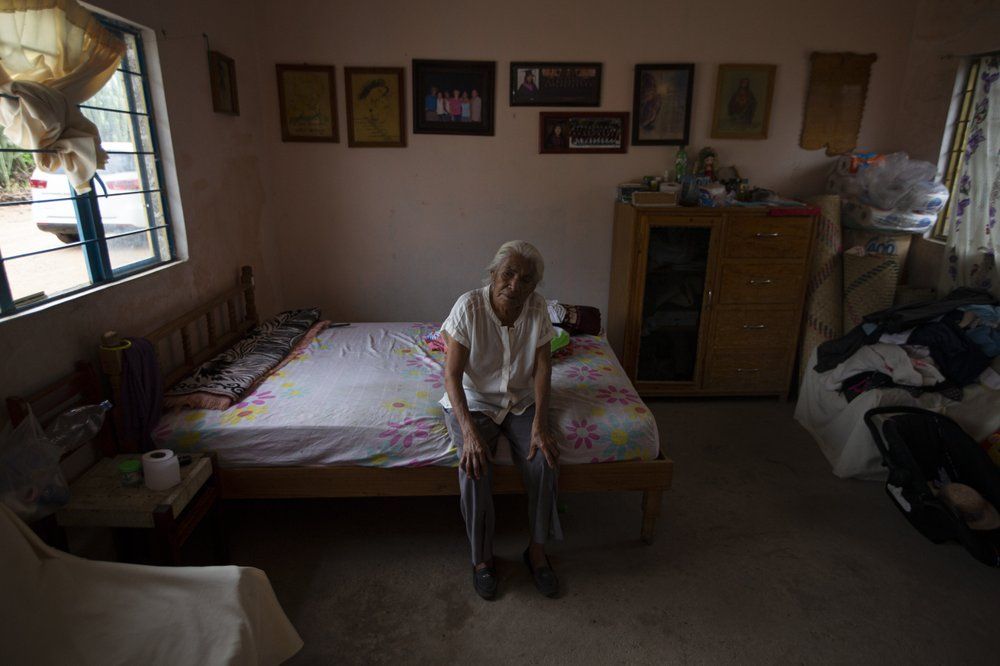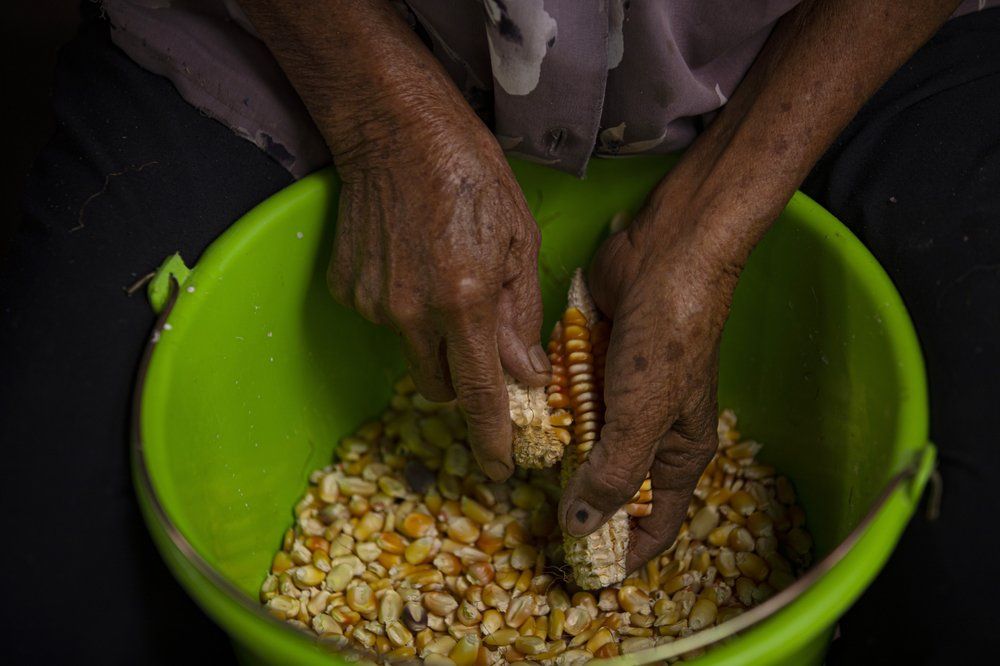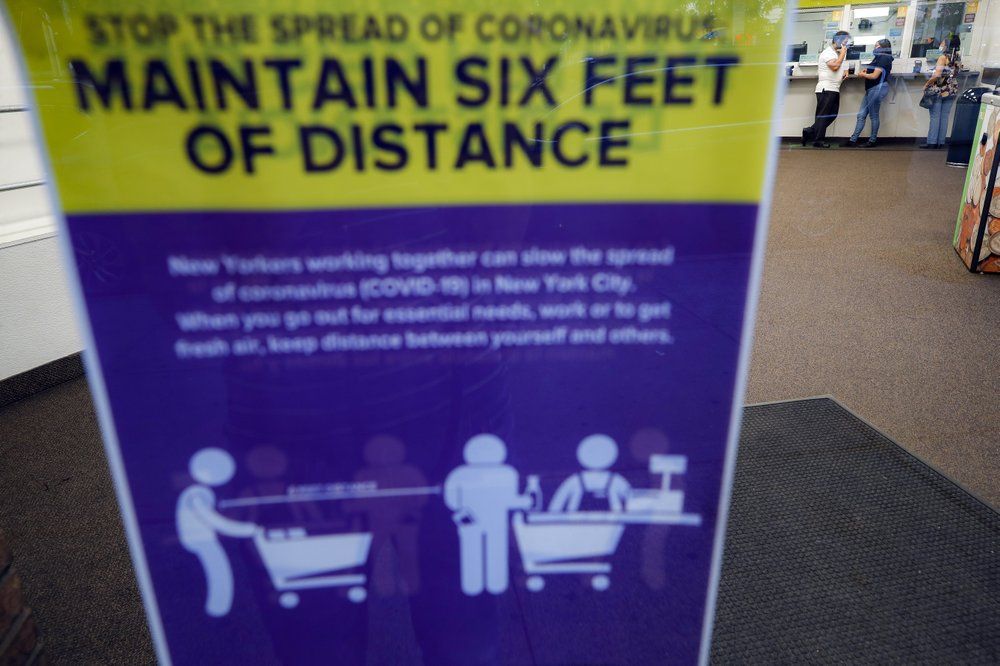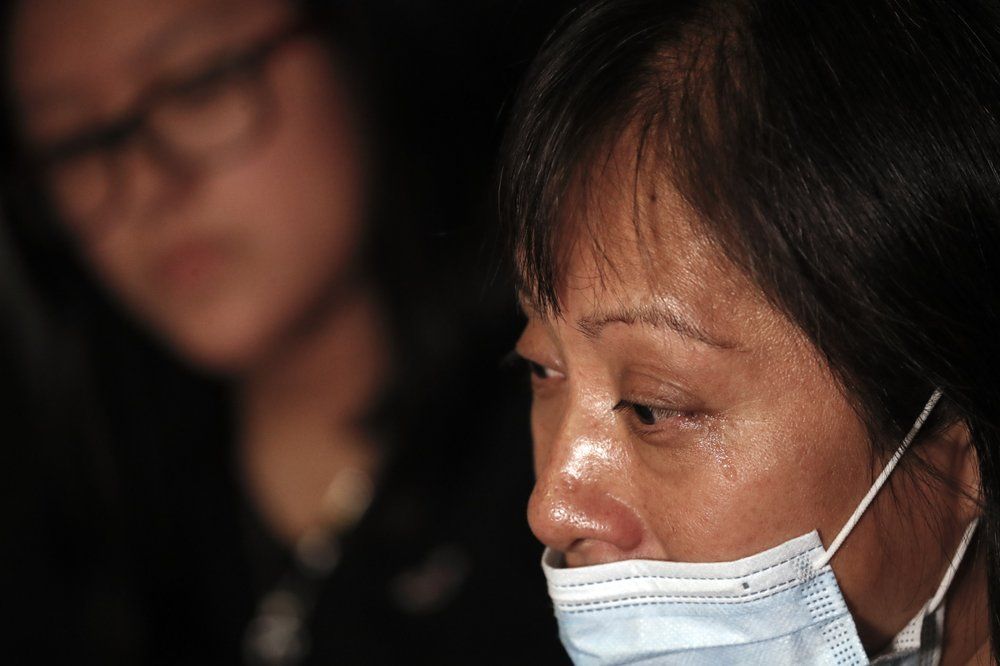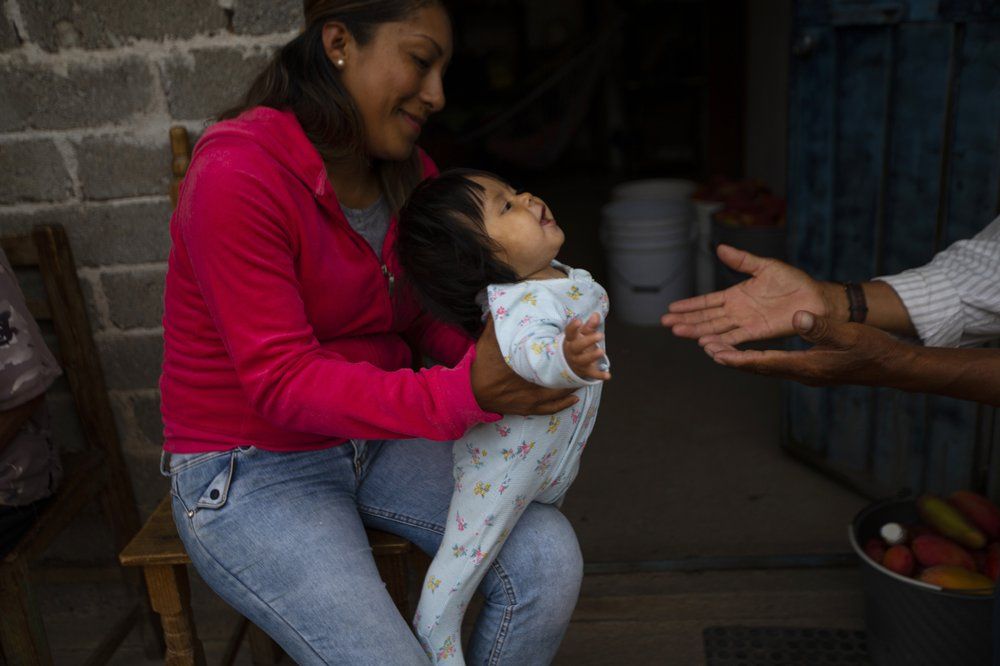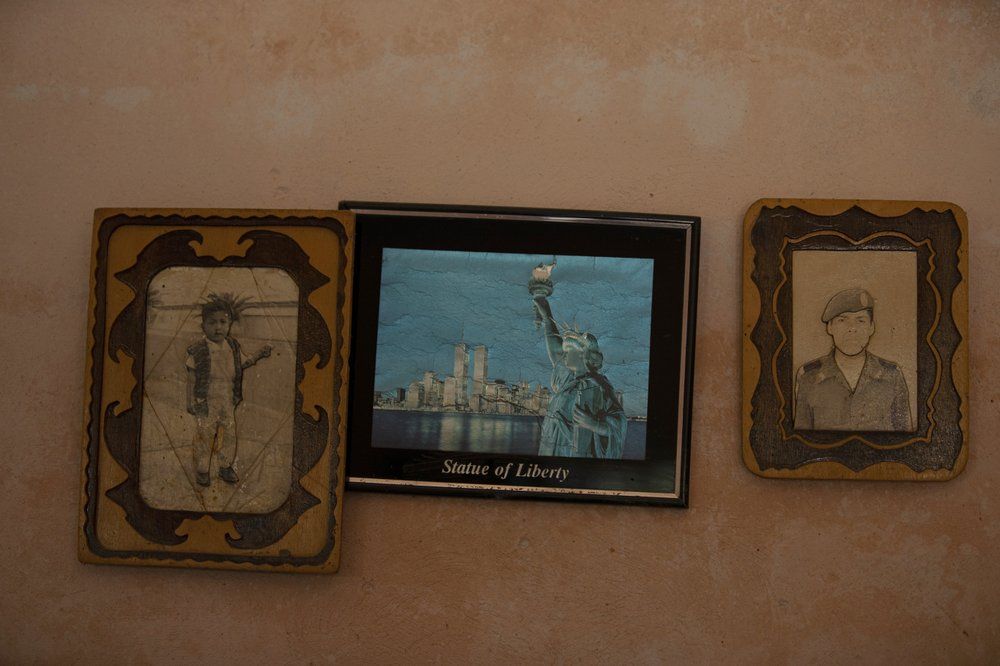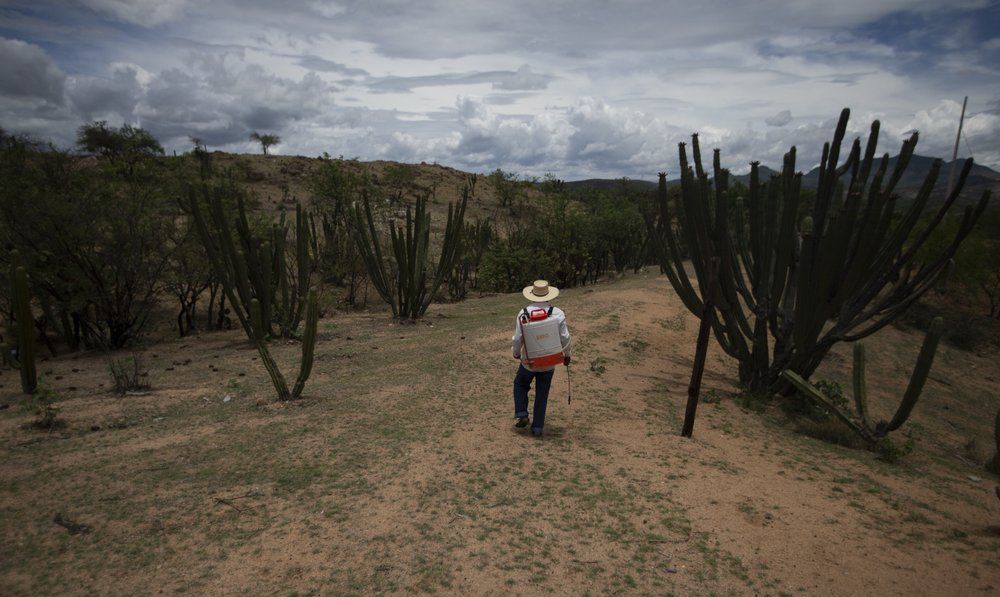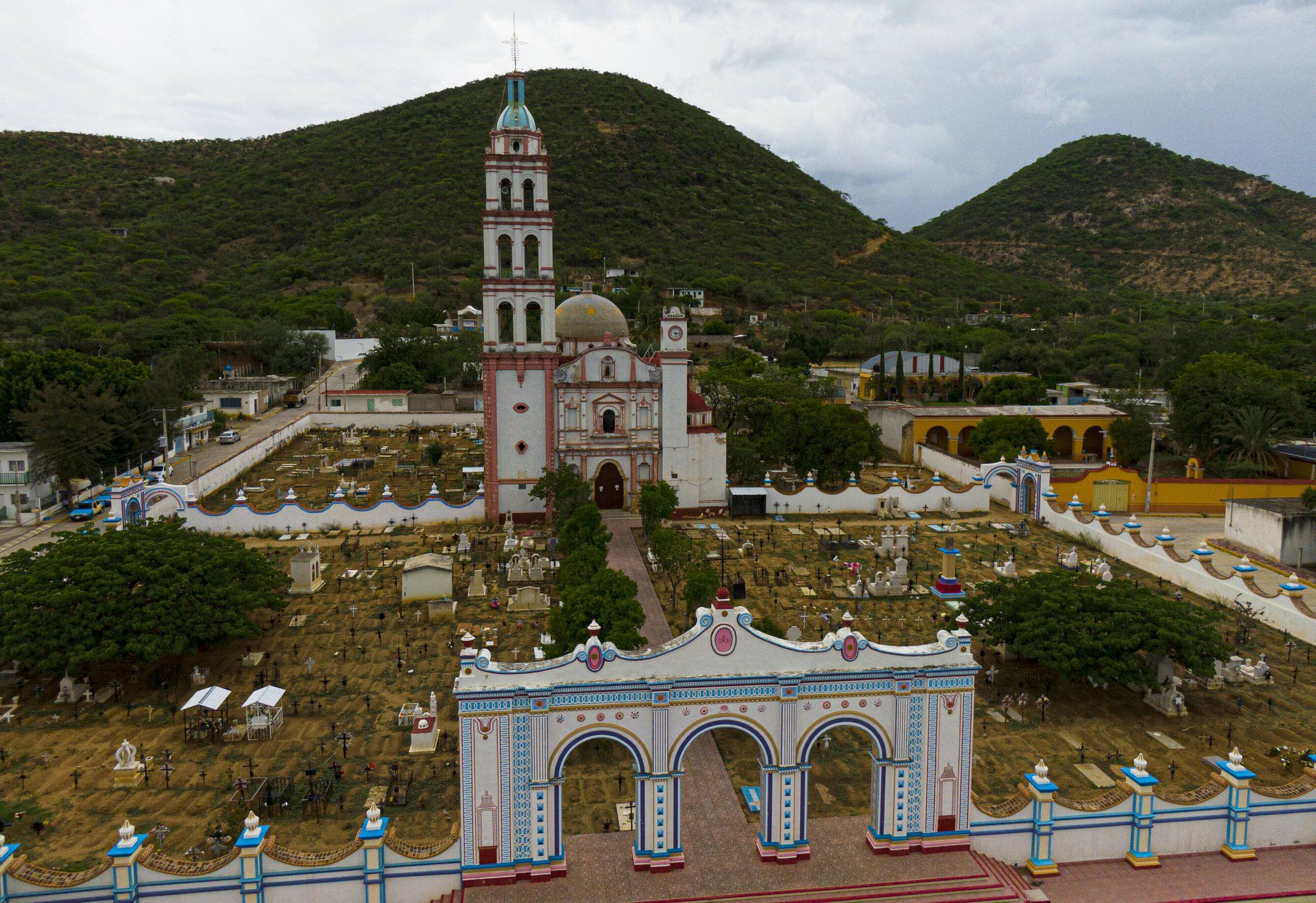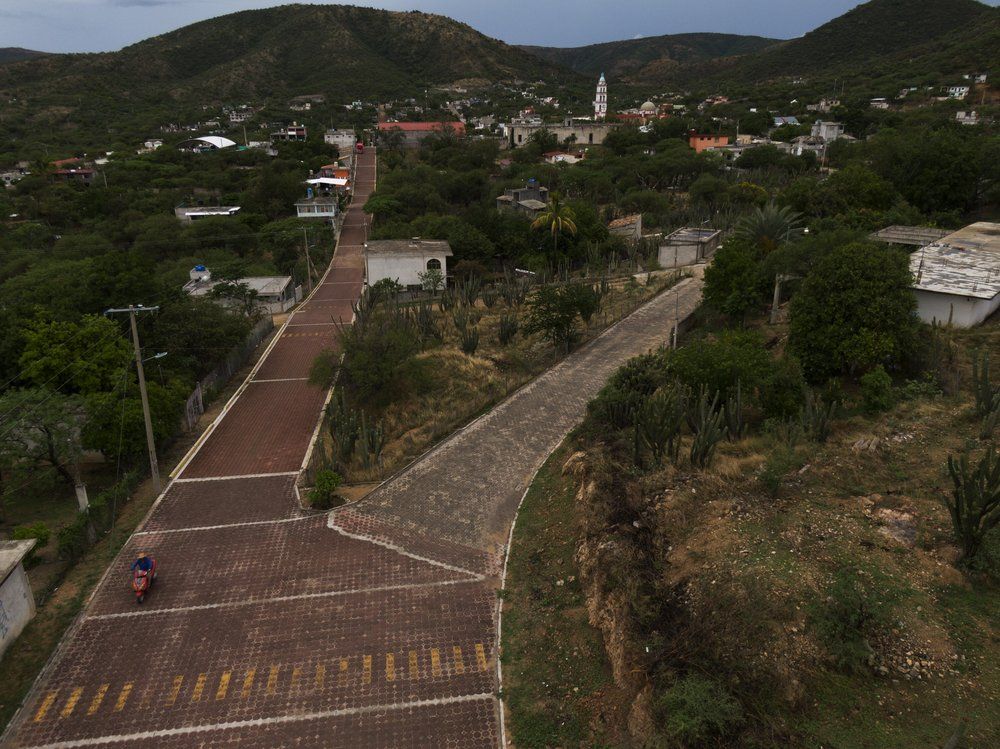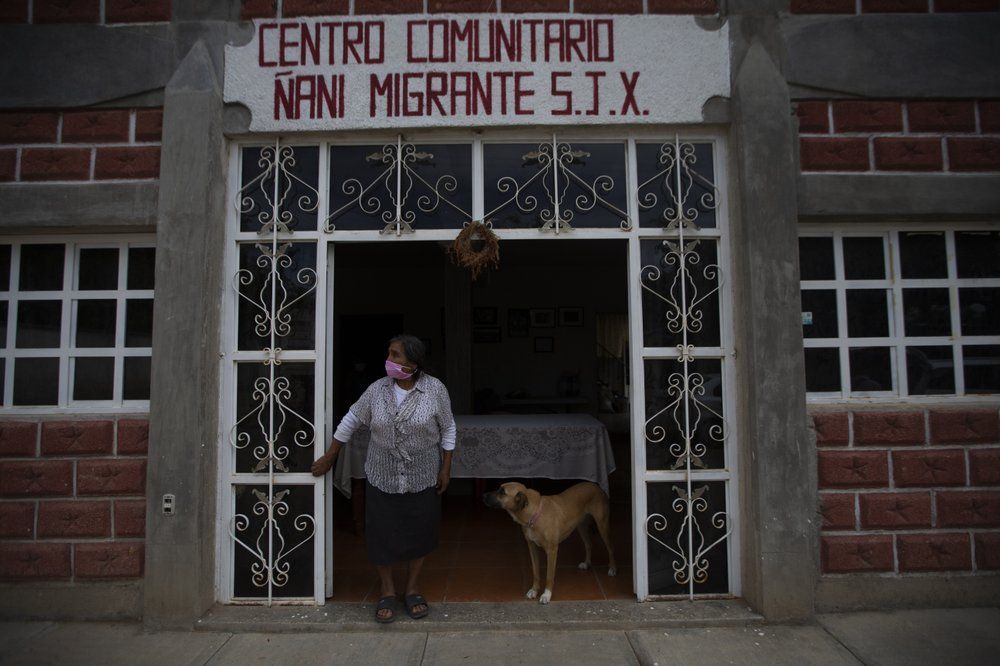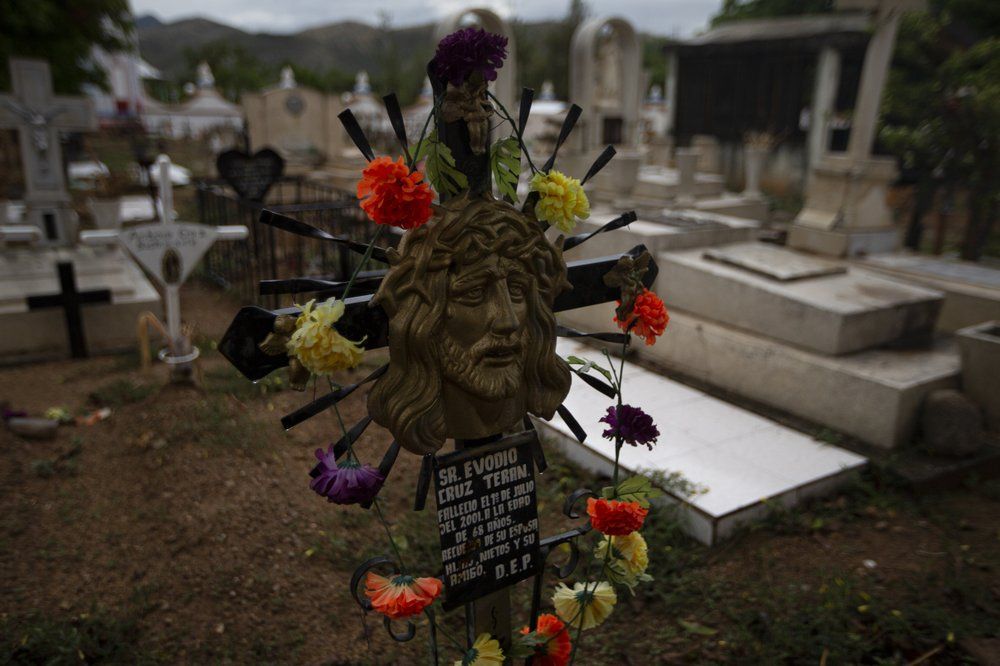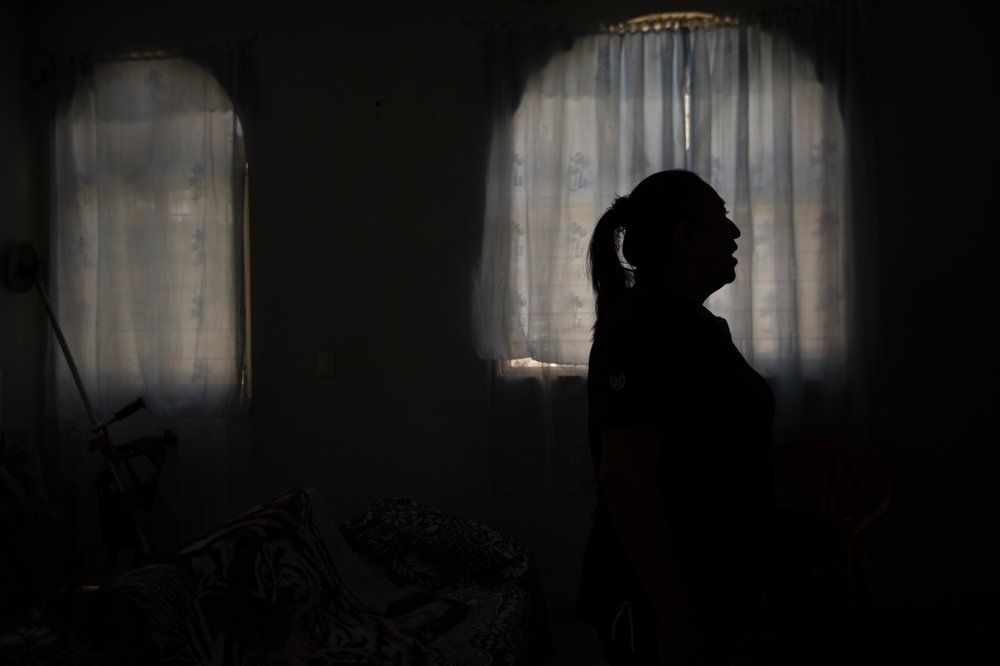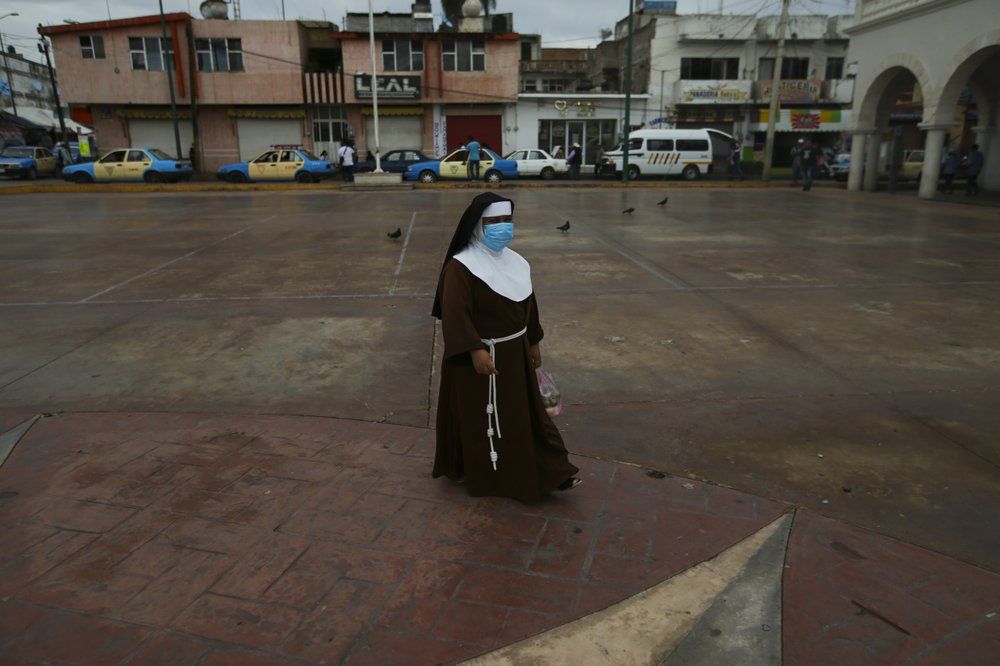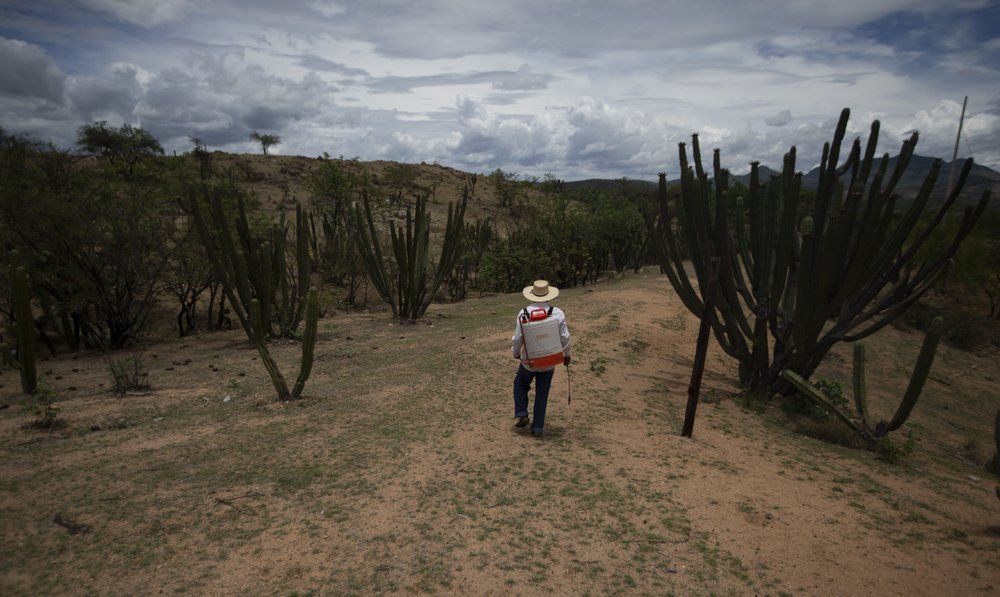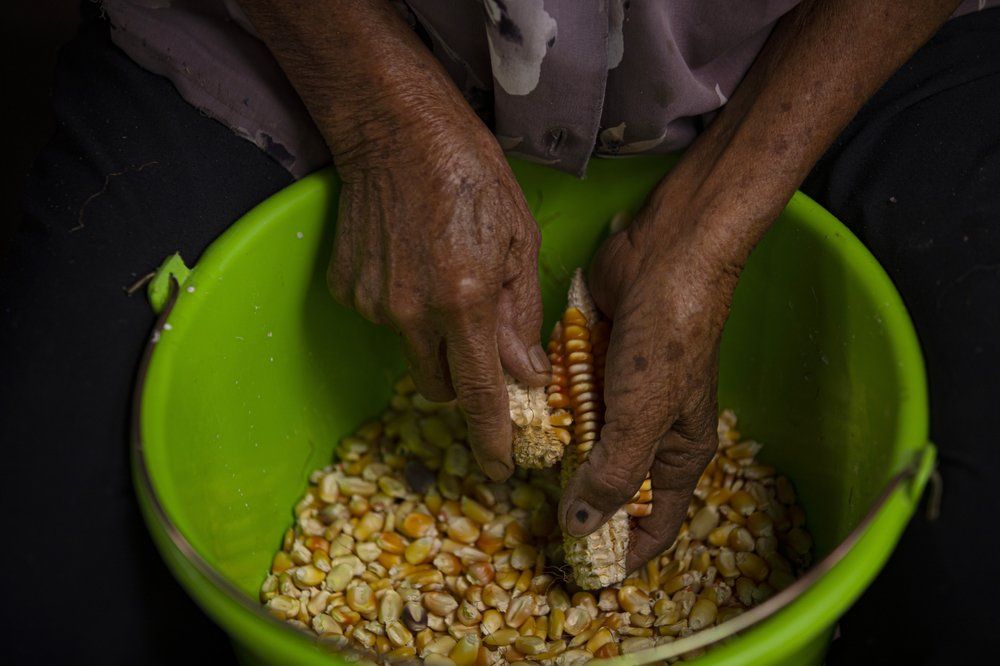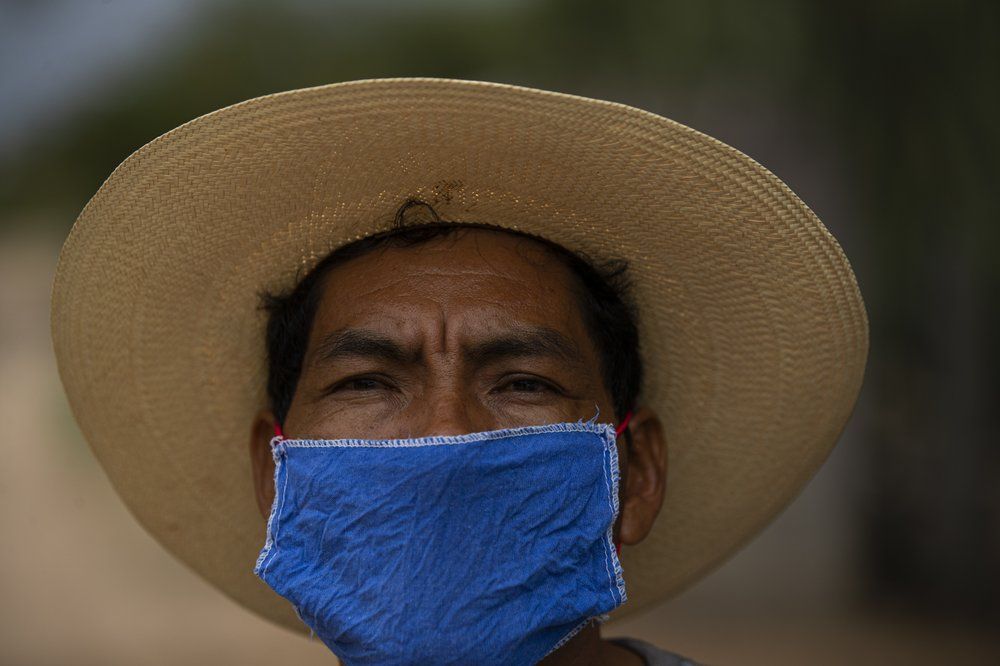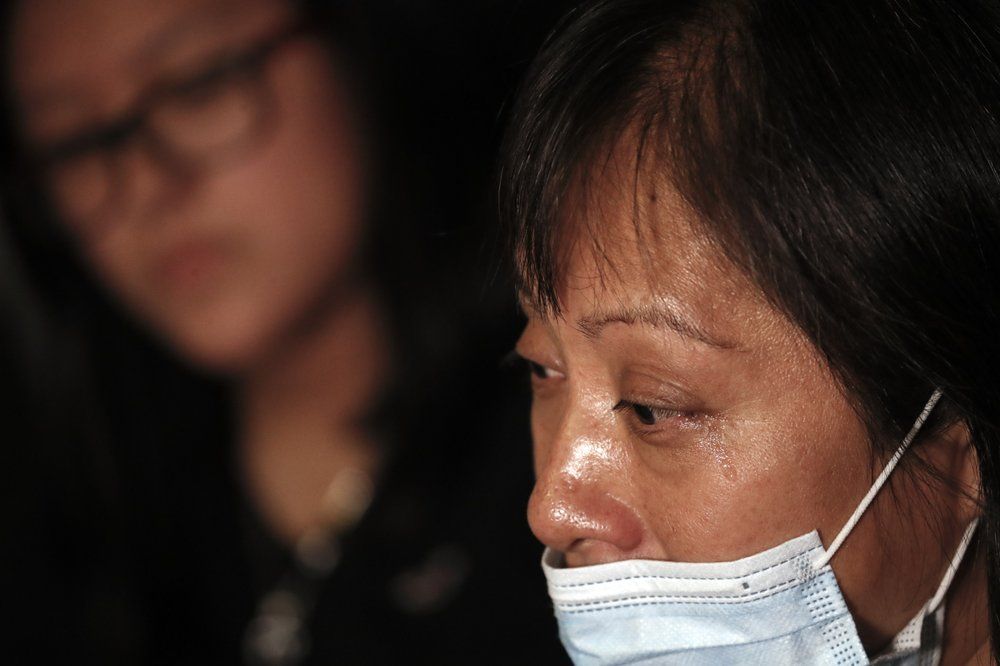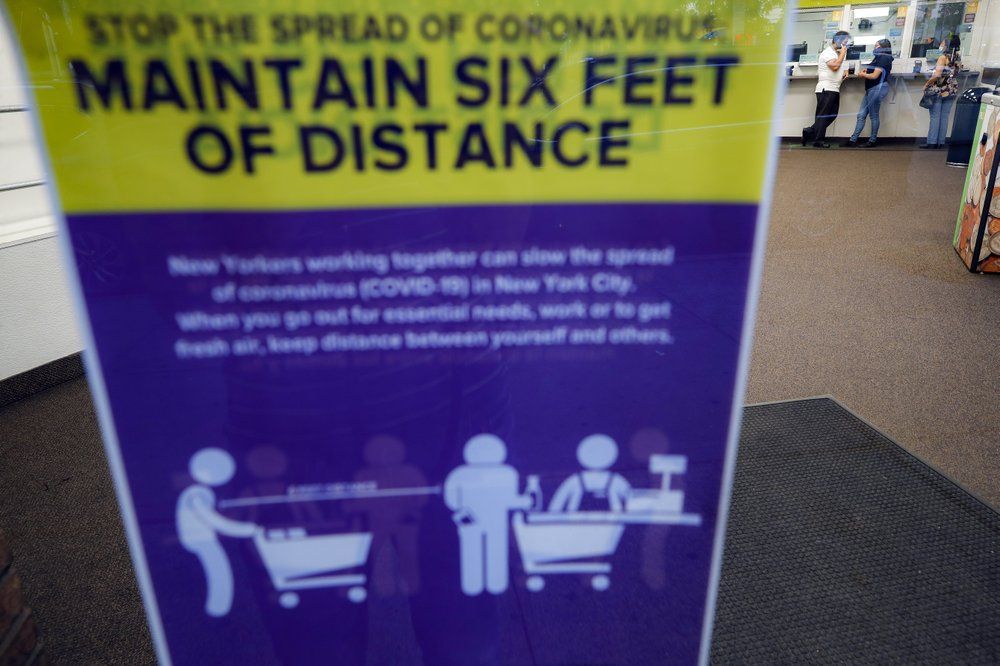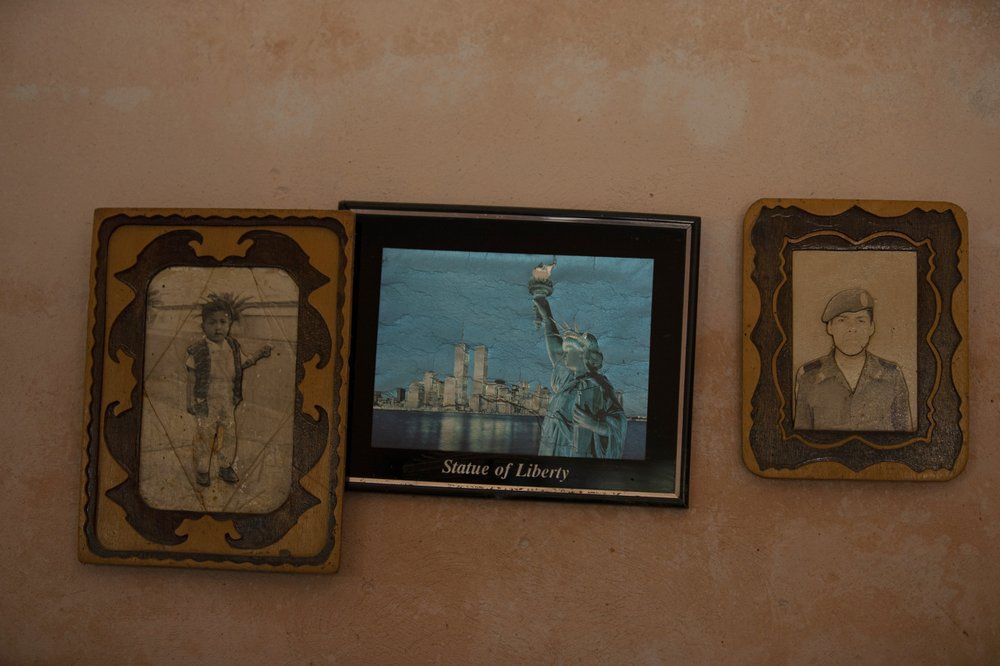NEW YORK (AP) — In the weeks he spent flat on his back in his Brooklyn bunk, wracked with pain and struggling to breathe, Axayacatl Figueroa could think of nothing but the small town and the family he had left behind in Mexico.
Each month, he had sent $300 or $400 to his wife and son in San Jerónimo Xayacatlán. The money was hard earned: For more than a decade, he cleaned pork, cut meat and boned chickens in the basement kitchen of a Vietnamese restaurant.
But now, Figueroa had COVID-19. There was no work, and there was no money to send home.
“I felt desperate. I couldn’t do anything,” he said.
For as long as Mexicans have gone north to find work, money has gone in the opposite direction. These remittances from expatriates working in the United States and other countries have been the life blood of places like San Jerónimo, a village of nearly 4,000 people in central Mexico.
But these days, fear accompanies the money that crosses the border. And it travels both ways.
Those who went to live in New York and other American cities are worried about how to keep supporting their families. They also send home warnings about the terrors of a virus that many in Mexico still don’t believe is dangerous.
Those who live in San Jerónimo and other towns and cities in Mexico fear for their relatives in the north, watching from afar as they lose their jobs, fall sick alone or without the documents that would allow them to move around freely -- and, too often, die in a foreign land.
The impact of COVID-19 has many questioning whether the years of struggle, absence and badly paid work were worth it.
Figueroa still believes it is. His son, a nursing student he left behind 15 years ago, is not so sure.
“I would have preferred to have him here,” said Ariel Juan Figueroa, through he knows that won’t happen anytime soon. His father is as persistent as he is.
“He won’t be back until he retires or can’t work,” said the son.
___
San Jerónimo is a Mixtec village that sits among low, dry hills that turn green in the rainy season. There is no cell service in a place where running water was not common until just a few years ago.
Nearly a third of its people have emigrated to New York. Most departed in 1990s or the first decade of the 21st century, leaving farm work behind to cross illegally into the United States.
The wages they’ve earned in New York’s kitchens and bodegas have paid for so much:
For medicine and schooling for the people who stayed behind. For the town church’s adornments of brick and turquoise filigree, and a three-story bell tower visible across San Jerónimo. For two-story cement homes that line the streets, dominating the few remaining adobe structures owned by families that didn’t send migrants to the U.S. -- or whose migrants disappeared on the way north.
Mayor Ibaan Olguín Arellano estimates that the town’s people received some $500,000 a month in remittances before the new coronavirus struck New York and other places where migrants are working.
Then, in April and May, as the situation grew dire in New York, far fewer people picked up remittances at money-wiring offices in the neighboring town Acatlán de Osorio.
“It had never fallen off like that,” Olguín Arellano said.
The World Bank and United Nations estimate that remittances to Latin American countries will fall nearly 20% this year, but Mexico appears to be holding on. Mexican migrants sent home a record $4 billion in March. After a dip in April, numbers were strong again in May.
Duncan Wood, director of the Mexico Institute at the Wilson Center, says much of that money came from emigrants who received unemployment benefits in the U.S.
Emigrants from San Jerónimo typically work off the books and are paid in cash, so they receive no benefits and did not receive stimulus payments, Wood said.
He predicted that Mexico will feel the pain in coming months, when unemployment benefits run out. The country has long depended on that money; remittances bring in more money from overseas than oil exports or tourism.
As remittance money dried up in San Jerónimo, home-building came to a halt and people started eating only what they could slaughter from their herds or harvest from their fields.
Family in New York told them to prepare for the coronavirus to reach their remote corner of Mexico.
“The people are suffering here and it will happen there, too,” Clara Lara’s son warned her from Staten Island. He sent her money with one request -- buy cloth and make face masks.
In March, almost no one in Mexico was talking about wearing masks. The president himself was still mixing, unprotected, with crowds of supporters. But Lara followed her son’s instructions and bought the cloth. One neighbor cut the fabric. Another folded it, and two others sewed masks in the house that the son had built which serves as a community center until the day he comes homes and takes up residence.
In five weeks they made nearly 500 masks and distributed them to neighbors with clear instructions from Doña Clara: Drink hot soup and tea and, if you notice any symptoms, isolate yourself at home.
So even before Mexico began debating quarantines, emigrants from this town imposed one on their families from 2,500 miles away. San Jerónimo stopped moving. To date, not a single villager has been infected; the mayor says six townspeople living in the U.S. have died.
On April 17, the church bells tolled for the first victim from the town, a young man living in New York. Four days later, another died.
“I didn’t believe it until I lived it in the flesh,” said Wilfrido Martínez, 69, who lost his 39-year-old son.
Mauricio worked in a restaurant kitchen in New York. He was diabetic and didn’t protect himself against infection, Martínez said. Until his son died, he had believed the virus was a fraud perpetrated by politicians for reasons he did not understand.
On July 11, nearly three months after his death, his son’s ashes were sent from New York, destined for the town’s cemetery alongside his mother.
From the speakers on the bell towers, prayers ring out daily, pleading for the end of the pandemic and praying for its victims.
“They go with the dream of achieving something but now, with the epidemic, many people have died,” Martínez said. “Their dreams die there.”
___
Sitting in the small, windowless kitchen of his apartment -- the only decoration on the wall, a framed painting of skyscrapers and the Statue of Liberty -- Axayacatl Figueroa calmly told the story of his illness.
He lost 15 pounds. He drank only the tea that his roommates, also from San Jerónimo, left on the other side of his closed door.
“When I stopped coughing they would ask me, ‘What happened? We can’t hear you anymore,’” he recalled.
Partly due to their often-cramped living conditions, New York’s Latinos have relatively high rates of death from COVID-19. At least 760 Mexicans have died there, more than in any other state and nearly half of all Mexican deaths due to the virus in the United State. No one knows how many have fallen ill.
Figueroa, 42, left his wife and son behind in San Jerónimo in 2005. Their plan was for her to follow and then send for their son, who was 3 at the time. But border agents caught her trying to cross the border five times, and she gave up.
Every month, Figueroa sent money to Mexico. He dreamed of finishing his home, built slowly over the years and still incomplete, and educating his son.
Once, when he was particularly ill, he called his wife and said something that he’d never brought up before. If he could, he said, he would return home. She froze.
“A lot went through my mind,” says Elisabeth Alvarado. Nearly a decade ago, she had asked him to come home, but he had said no -- he needed to make money for the family. How sick must he be, that he was reconsidering now?
Figueroa recovered after three weeks. His finances have not. Like many migrants, he lost his full-time job; according to the Migration Policy Institute, unemployment among the Latino foreign-born population in the U.S. has nearly quadrupled during the pandemic. Worst affected are those who, like Figueroa, are not here legally.
In Latino neighborhoods across New York, people wait in long lines for food aid being distributed by churches and charities.
Figueroa was able to return to the Vietnamese restaurant part-time. He arrives to work by bike, pedaling past vendors selling face masks and gloves for a dollar. But he is just making ends meet and hasn’t sent money home since March.
His wife tells him not to worry, to look after himself. The family will tighten their belts, use some savings, eat more basic food; they won’t sell a goat or turkey until it is absolutely necessary.
But Figueroa feels powerless.
“You leave to improve yourself, to help your family, to support them, and I feel like I’m not doing that,” he says. “I’m failing.’’
___
Emigration from San Jerónimo has slowed greatly since 2015. Town historian Tamara Cardoso says that after a generation of emigration, the quality of life has improved in San Jerónimo and there’s less urgency for a decision “that means going far from everything, starting a new life, watching your children grow from far away.”
Many of the new concrete houses in San Jerónimo are finished, but empty. The emigrants who built them haven’t yet come back to live in them.
A few of the emigrants have come back over the years, however. On Sept. 11, 2001, Jorge Vázquez was working in a New York restaurant. After the attack on the Twin Towers, business dropped off and he was fired.
He remembers the fear of another attack, so similar to the fear of contagion.
“History’s repeating itself in some way,” he says.
Three months later, he returned to San Jerónimo. Though he tried to go north in 2003, he ended up staying in Mexico to care for his mother and for the three daughters of his sister, Magnolia Ortega, who remained in the United States.
Vázquez, 42, works in the fields. But he was trained as a nurse, and occasionally puts his old skills to work treating a scorpion bite or injecting a goat.
In recent days, he’s been preparing the soil for a new planting of corn, spraying the last mangoes of the season and picking some fruit to sell in the market, which opened at the end of June after a nearly three-month shutdown.
The closure left Vazquez without income just as his sister lost her job cleaning houses in New York, and reduced the amount she sent home from $800 to $300 a month.
The money has come year after year, aside from when Ortega was diagnosed with cancer in 2011. The family used the money to add rooms to the house; to build a kitchen where modern appliances coexist with a cooking fire and corn-grinding stone; to buy medicine for their aging mother and pay for one of the young women, Ivette Guzmán, to study psychology. There wasn’t enough money to pay tuition for her sister, too.
“Things have been achieved here through their efforts,” said Guzmán, 25, as she stripped corn with her grandmother, her sister and her 2-year-old daughter amid goats and cacti. “But we’re worried.”
Vázquez had a telephone installed in the house so the family can stay in touch with Ortega. They know that though her cancer is in remission, she remains vulnerable to coronavirus. They know from watching television that even healthy people fall ill with coronavirus. They are terrified.
Ortega is considering returning to San Jerónimo with her second husband and their daughter, who was born in the United States. But there is no work there either, she said, and if she was to return there would be one less emigrant, sending back one less monthly check.
“If I go back,” she said, “we won’t have anything.”
___
María Verza reported from San Jerónimo Xayacatlán, México.
COVID-19 Update: The connection between local and global issues–the Pulitzer Center's long standing mantra–has, sadly, never been more evident. We are uniquely positioned to serve the journalists, news media organizations, schools and universities we partner with by continuing to advance our core mission: enabling great journalism and education about underreported and systemic issues that resonate now–and continue to have relevance in times ahead. We believe that this is a moment for decisive action. Learn more about the steps we are taking.
